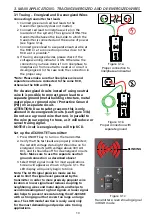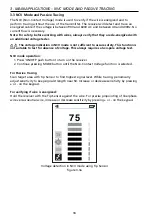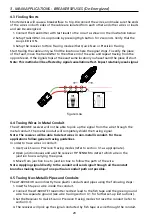
5
2.1 AT-6000-RE Receiver
The AT-6000-RE Receiver detects the signal in wires and cables using the following methods:
Active (using transmitter)
Uses a signal generated by the AT-6000-TE transmitter to trace either Energized or De-
energized wires.
The main advantage of this method is the ability to trace the path of the particular wire
using a receiver. Since the signal is not present in any neigboring wires, the receiver will
detect only a wire that is connected to the transmitter.
Active tracing method is used when a receiver is set to: Quick Scan or Precision Tracing or
Breaker/Fuse Identification modes.
Passive (without transmitter)
Uses electromagnetic fied sourounding Energized wires.
Trace any energized wire from 90 to 600 V AC using only the the AT-6000-RE receiver by
sensing the wire’s energy field.
The passive method is very easy and convenient to use because it does not require a
transmitter. However, the AT-6000-RE is not selective to a particular wire and will indicate
any energized wire from 90 to 600 V AC.
This method is best for simple tracing applications where the wire is energized and no other
wires are located nearby.
Passive tracing method is used when receiver is set to Non-contact voltage (NCV)detection
mode.
Note: The AT-6000-RE will NOT detect signals from the wire through metal conduit or
shielded cable. Refer to Special Applications, section 4.4 “Tracing Wires In Metal Conduit”
for alternative tracing methods.
2. KIT COMPONENTS










































